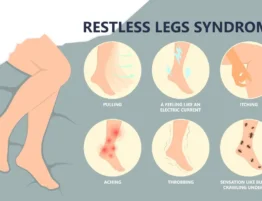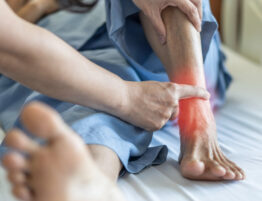

One of the most common foot complaints is heel pain, which is commonly referred to as Plantar Fasciitis. Here we’ll discuss how to prevent a visit to the doctors office when experiencing heel pain and what you can do at home to help alleviate your symptoms.
The symptoms of heel pain often start at the bottom of your heel and are very prevalent when first getting up in the morning. This is a very common complaint, and even though the pain can gradually get better throughout the day, it’s important this is treated right away. When plantar fasciitis pain is mild, you have a better chance of reversing the pain with some simple recommendations.
Shoes and Orthotics
First and foremost, the most important thing to do is to make sure your shoes are not run down. Shoes eventually wear down and do not give the foot as much support as they used to, which can cause pain. If you’re an active runner or a walker, good shoe support is key. If you are flatfooted, this becomes even more significant.
With every step you take the foot flattens, causing the fascia to pull from your heel, which can cause symptoms of heel pain. So, utilizing more support in the shoe can be very beneficial. If you don’t believe your shoes are worn down, another option would be to buy over-the-counter shoe inserts, which are also known as orthotics.
There are many options when purchasing orthotics, and you can typically find them in an athletics store. However, be careful when going to an orthotics outlet because oftentimes these devices can cost several hundreds of dollars- and you’re better off seeing a podiatrist to have custom orthotics made to work for your foot type. Ideally, you should not be spending more than $10-$15 for store-bought inserts.
Icing the area of heel pain from plantar fasciitis
Icing is often used to treat sports medicine injuries and can also be employed for the reduction of pain and inflammation caused by heel pain. If you do choose to ice the area, it’s important to do it for 10 minutes twice a day. You can also roll your heel on a frozen plastic bottle as this can be beneficial.
Stretching
Stretching before you get up in the morning can also help as it can reduce the pain and inflammation of the plantar fascia. In order to stretch this area correctly you should keep your knee straight and put your foot up towards you. By keeping your knee straight you are stretching your calf and achilles tendon; this will allow your ankle to flex up more and thereby lessen the need for excessive pulling of the fascia. The band of tissue you can feel beneath your skin in the arch is the fascia. It is often suggested to be careful with this because there have been cases where this can actually worsen the symptoms.
Another way to help stretch the achilles, calf and plantar fascia is by using a night splint. Although they have shown to be useful for many, they can also be an annoyance and reduce sleep quality.
Anti-Inflammatories for heel pain from plantar fasciitis
Anti-inflammatories can also be taken. These medications help with the pain and inflammation for those experiencing mild plantar fasciitis. Anti-inflammatories can be taken for approximately one or two weeks to see if they help.
Cut Down on Activities
Lastly, it’s important to back off your activity level. While moving around may be a part of what you do, it’s not helping your heel heal! You can back off entirely, or even cut it down by 50%. One of the most common causes of heel pain is doing too much too soon. When people take up a new form of exercise, such as walking or running, it is important to factor in days of rest- especially since your body requires long periods of rest when injured. Resting is as important as the stress you put on your body to become more fit. Therefore, if you’re walking or running five days a week, maybe cut back to just two or three to see if there is improvement.
If you’ve attempted these treatments for heel pain from plantar fasciitis approximately three to four weeks and have seen no results, it’s probably time to consider professional attention as you may need more aggressive treatment options. Even so, it is important to note that early and aggressive intervention can spare you a trip to the podiatrist’s office.










Write a comment: